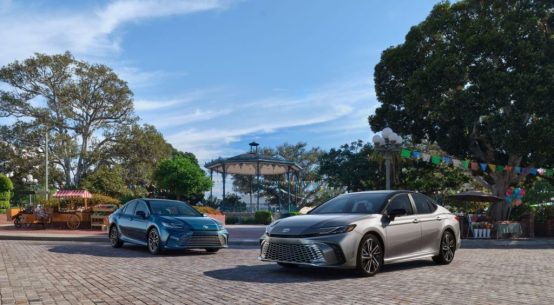
In today’s vehicle market and economy, it’s not exactly realistic for most Americans to throw down their hard-earned money on a brand-new vehicle. Due to the microchip shortage, new vehicles are far fewer in supply than they ever have been. Unfortunately, that means that consumers are having to pay premium prices when they shop for new cars.
Another disadvantage with buying a new car is that it begins to depreciate the moment you drive it off the lot. This may be a hard pill to swallow, but the average new car depreciates in value by over 20% in the first year of ownership. The price along with the devaluation issue has led many car-buyers to seriously consider used vehicles.
For those of you that I’ve never purchased a used car before, it doesn’t have to be an intimidating process. All you need to do is a little bit of homework, be mindful of your budget, and make sure you have all your ducks in a row upon purchasing. Here are the ABCs of purchasing a used vehicle.
A for Assessing the Situation
Your first step to finding the perfect used car is to assess the situation. Fortunately, the Internet makes this incredibly easy to do. Simply search the term “used cars near me” and that should pull up all your local dealerships that are in the used car market. Or you can be more specific and search for “used cars for sale in Houston.” From there, it’s just a matter of identifying which type of car, truck, or SUV that looks like a good fit for you.
Obviously, you want to be wary of a few things such as high mileage, accidents on the vehicle history, and a long list of previous owners. The trick to used car shopping is to find that rare gem that is in the best condition possible at the right price.
Try to identify a good handful of used cars that look like a good potential fit so that you’re not putting all of your eggs in one basket. Remember, you may have an ideal car in mind, but going with a used car means you won’t get absolutely everything on your wish list. Be sure to self-assess what’s most important to you and prioritize those items when shopping. For instance, if you have a long commute or find yourself traveling a lot by car, fuel economy and infotainment features should be at the top of your list.
B for Budgeting and Bargaining
Setting a budget is perhaps one of the most important steps when going through the used car purchase process. Although it can be tempting to overextend yourself because you found your dream car, you have to think in both the short and long-term. Remember, the used car purchase price is only the tip of the iceberg. You also have to consider sales tax, insurance, registration fees, monthly fuel costs, and any immediate repairs and/or maintenance the car may need. A $10,000 used car can very easily become a $12,000 used car in the blink of an eye.
However, you’re not totally helpless on the pricing issue, which brings us to our second “B.” You need to drive a hard bargain, and basic negotiation dictates the majority of used car sellers aren’t advertising their best and final offers. Everybody in the seller’s market – new and used – highballs the price because they expect to be negotiated down. So, don’t be afraid to chip away at the price a little. If the seller truly wants to unload their vehicle, they’ll be willing to make a small concession on the price.
C for Completing the Purchase
Let’s say that you finally get to the point where you’ve test driven the car you want and everything checks out. The price is right and you and the seller have reached an accord.
Your next step is to complete the purchase; however, it’s important to keep in mind that car purchases are not a handshake deal, even if it’s from a friend or family member.
Make absolutely sure that you have all your ducks in a row as far as paperwork is concerned. The main documents that you’ll need are the title, bill of sale, and (if applicable) VIN number verification. You’ll also want to check with your local Department of motor vehicles to make sure that you’re not missing any additional documentation requirements. For instance, some states require proof of a satisfactory emissions test.
Start Your Used Car Shopping Process Today
Now that you know the ropes when it comes to used car shopping, the next step is to kick off your search for that perfect car, truck, or SUV near you. Remember, you can use search terms like “used cars in Texas” to identify the dealerships and private sellers in your direct vicinity. From there, you can start applying filters to your search in terms of price and vehicle type. Approach the process deliberately and with a patient attitude. Buying a used car can take time, but if you do your homework and are good about communicating with sellers, you’ll do just fine.





